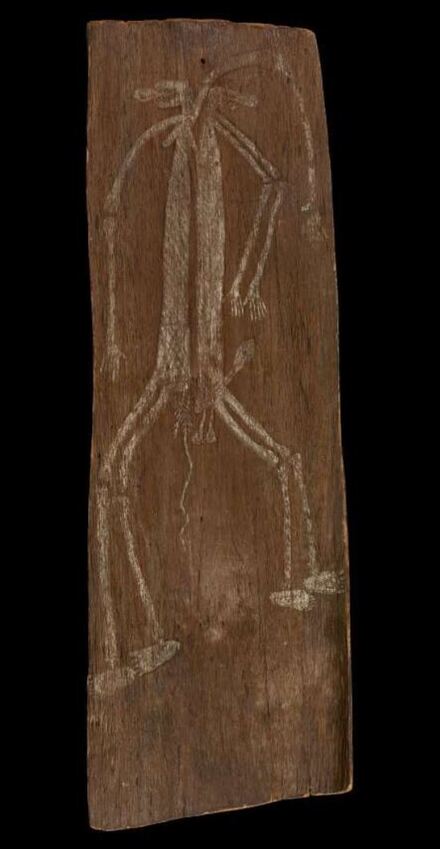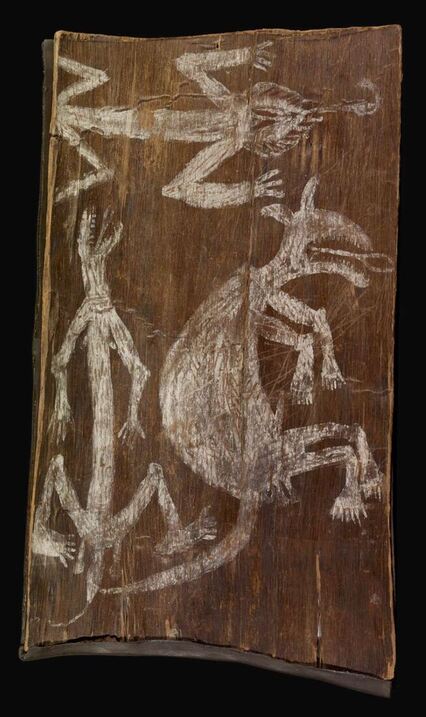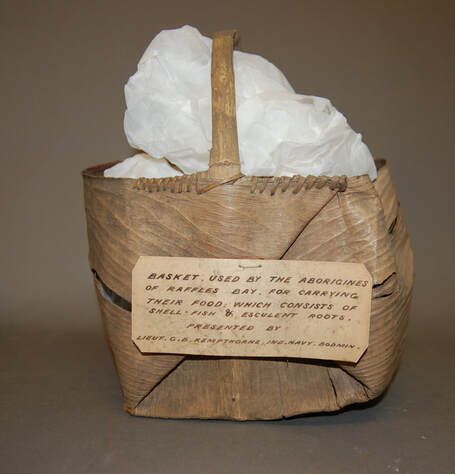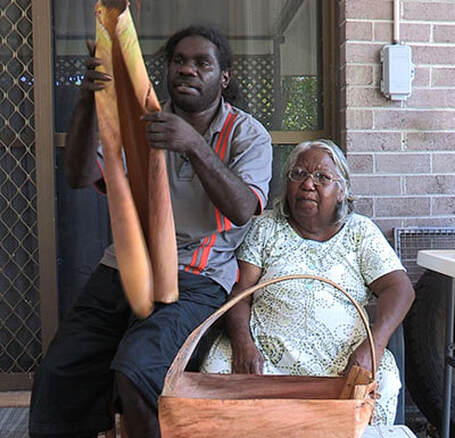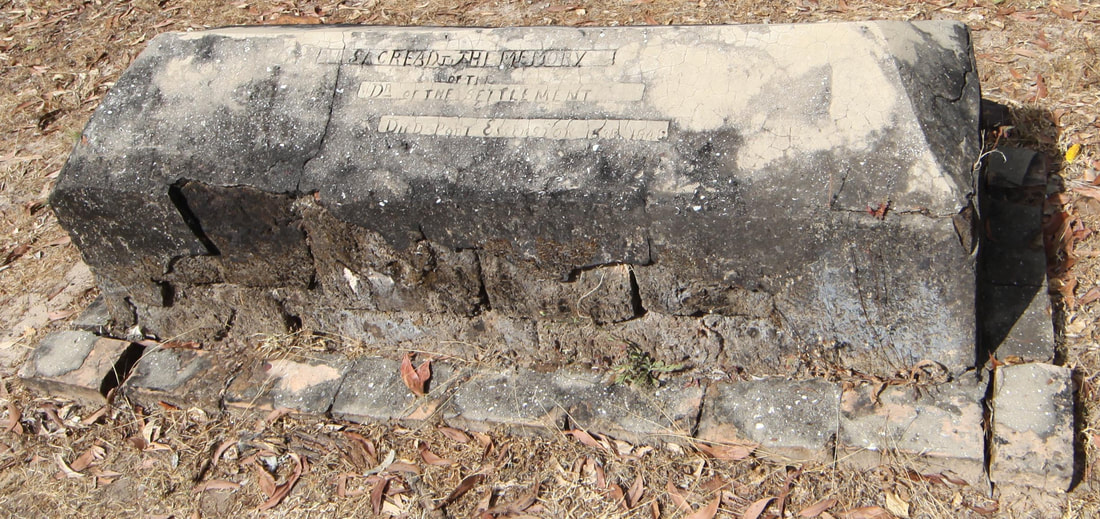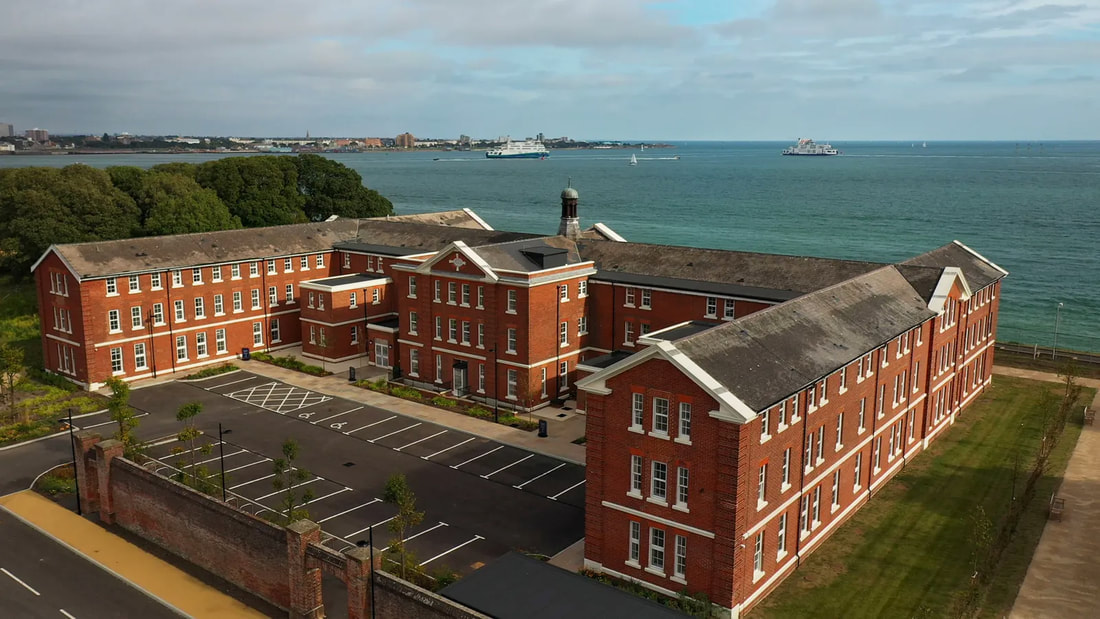- The Tilston Collection -
British Museum via Haslar Hospital Museum
'birds, specimens of natural history, drawings etc'
Acting Assistant Surgeon Richard Tilston RN
c1819 - 4/3/1849
Address
1841 Ellesmere, Shropshire
Biography
Born, Ellesmere, Shropshire. Naval surgeon, stationed for some time at Port Essington, where he died and was buried in 1849. In his will, he left his 'collections of birds, specimens of natural history, drawings etc' to Haslar Hospital Museum. In will, described as Acting Assistant Surgeon in the Royal Navy, Port Essington. Interred at Victoria Cemetery Port Essington.
Bibliography
Simpson 2021 The Royal Navy in Indigenous Australia, 1795-1855. Maritime Encounters and British Museum Collections, pp.244-7. 1841 England Census
c1819 - 4/3/1849
Address
1841 Ellesmere, Shropshire
Biography
Born, Ellesmere, Shropshire. Naval surgeon, stationed for some time at Port Essington, where he died and was buried in 1849. In his will, he left his 'collections of birds, specimens of natural history, drawings etc' to Haslar Hospital Museum. In will, described as Acting Assistant Surgeon in the Royal Navy, Port Essington. Interred at Victoria Cemetery Port Essington.
Bibliography
Simpson 2021 The Royal Navy in Indigenous Australia, 1795-1855. Maritime Encounters and British Museum Collections, pp.244-7. 1841 England Census
The Tilston Collection
These two bark paintings were collected for the Royal Navy’s Haslar Hospital Museum near Portsmouth, England. Established in the 1820s, Haslar displayed material from around the world, acquired during naval voyages. In the mid-19th century the bulk of the museum’s collections were transferred to other museums and collectors. More than 250 objects, some from Australia, were transferred to the British Museum.
BM Curator's comments
As outlined by Simpson (2020:244-245), when Tilston died at Port Essington in 1849, he left his collection in his will to Haslar Hospital Museum. Weighing 'a ton', the collection was taken from Port Essington to Sydney in HMS Meander; it stayed in the commissariat stores for almost a year until it was arranged by another naval surgeon WHB Jones for it to be sent to Haslar, where it arrived in 1851.'
As outlined by Simpson (2020:244-245), when Tilston died at Port Essington in 1849, he left his collection in his will to Haslar Hospital Museum. Weighing 'a ton', the collection was taken from Port Essington to Sydney in HMS Meander; it stayed in the commissariat stores for almost a year until it was arranged by another naval surgeon WHB Jones for it to be sent to Haslar, where it arrived in 1851.'
|
BM Curator's comments
'Found unnumbered in collections; apparently unregistered. Old label "Native drawing from the natives of Port Essington. Executed with their left hands". Specific meanings are not recorded for this painting, but the figures are likely to represent spirit ancestors. Bark paintings from the 1800s are rare. |
Bibliographic references
Sculthorpe et al. 2015 / Indigenous Australia: Enduring Civilisation (p.135, fig.16)
National Museum of Australia 2015 / Encounters. Revealing Stories of Aboriginal and Torres Strait Islander Objects from the British Museum (p.77)
Simpson 2020 / The Royal Navy in Indigenous Australia, 1795-1855. Maritime Encounters and British Museum Collections. (pp.245-247)
Sculthorpe et al. 2015 / Indigenous Australia: Enduring Civilisation (p.135, fig.16)
National Museum of Australia 2015 / Encounters. Revealing Stories of Aboriginal and Torres Strait Islander Objects from the British Museum (p.77)
Simpson 2020 / The Royal Navy in Indigenous Australia, 1795-1855. Maritime Encounters and British Museum Collections. (pp.245-247)
BM Acquisition notes
Lieutenant George Borlase Kempthorne was on the ship Tigris in search of survivors of the ship, Charles Eaton. He wrote a narrative of his voyage which notes he was on Murray Island on 28 and 29 July 1836. See G. B. Kempthorne 'Art IX - 'A Narrative of a voyage in search of the Crew of the Ship "Charles Eaton", performed in the year 1836', Transactions of the Bombay Geographical Society, Vol VIII. 1840.
Lieutenant George Borlase Kempthorne was on the ship Tigris in search of survivors of the ship, Charles Eaton. He wrote a narrative of his voyage which notes he was on Murray Island on 28 and 29 July 1836. See G. B. Kempthorne 'Art IX - 'A Narrative of a voyage in search of the Crew of the Ship "Charles Eaton", performed in the year 1836', Transactions of the Bombay Geographical Society, Vol VIII. 1840.
The 'Charles Eaton' was bound from Sydney to Canton via Singapore on the 29th of July 1834. On the 15th of August a strong wind drove the vessel onto a reef near Sir Charles Hardy Islands. The 'Charles Eaton' fell broadside onto the reef with the sea making a clean breach over the vessel. All the ship's boats except the large cutter were destroyed. Several crew members seized it and made for Timor, abandoning the remaining crew members and passengers. They reached Timor Laut and secured a passage to Amboina the following year, arriving on the 7th of October 1835 (Australian 03/05/1836:3). The remaining crew members and passengers left the wreck on two rafts. The brig 'Tigress' and the schooner 'Isabella' were dispatched in search of survivors. The 'Isabella' recovered only two survivors (Sydney Gazette and New South Wales Advertiser 29/10/1836:4).
Museum number
Oc1855,1220.177
Description
Musical instrument, drone pipe, didjeridu, made from hollow length of cane.
Oc1855,1220.177
Description
Musical instrument, drone pipe, didjeridu, made from hollow length of cane.
BM Curator's comments
Description from Extracts from the British and Medieval Register 1757-1878, p.185:
'177. Musical instrument formed of the section of a cane. L. 3 feet 3 inches. It is called Ebero. Used by Aborigines Port Essington, New Holland.'
The contemporary word for the generic term 'didjeridu' among Iwaidja people of Port Essington is 'Ardawirr'. It has been noted that the word didjeridu may have been coined by Commandant Collett Barker at Raffles Bay 1828-1829 when he described the sound made by Aboriginal man Mago who played 'a large hollow cane about 3 feet long' and made a sound like 'didoggery whoa'. Thomas Wilson depicted such an instrument in an image titled 'Dance of the Aborigines of Raffles Bay' published in 1835 (see Kim Akerman, Bruce Birch and Nicholas Evans, 'Notes on the Contemporary Knowledge of Traditional Material Culture Among the Iwaidja - Cobourg Peninsula, Arnhem Land, Northern Territory 2005-2006', Transactions of the Royal Society of South Australia (2014) 138(2):181-213.
The entry for this object in the ‘Description from Extracts from the British and Medieval Register 1757-1878’ also notes that there is a Haslar label associated with this object which reads ‘44 5/29 3’.
Eth Doc 1171 includes a letter, dated 22 September 1856, from AW Franks to Sir John Liddell of the Admiralty. In this letter Franks notes that some of the Haslar objects transferred to the British Museum in 1855 ‘... have tickets on which are registration marks of various years from 1843 to 1854 e.g “53 4/11 2."’ This would strongly suggest that this object was acquired by Haslar Museum in or before 1844.
Description from Extracts from the British and Medieval Register 1757-1878, p.185:
'177. Musical instrument formed of the section of a cane. L. 3 feet 3 inches. It is called Ebero. Used by Aborigines Port Essington, New Holland.'
The contemporary word for the generic term 'didjeridu' among Iwaidja people of Port Essington is 'Ardawirr'. It has been noted that the word didjeridu may have been coined by Commandant Collett Barker at Raffles Bay 1828-1829 when he described the sound made by Aboriginal man Mago who played 'a large hollow cane about 3 feet long' and made a sound like 'didoggery whoa'. Thomas Wilson depicted such an instrument in an image titled 'Dance of the Aborigines of Raffles Bay' published in 1835 (see Kim Akerman, Bruce Birch and Nicholas Evans, 'Notes on the Contemporary Knowledge of Traditional Material Culture Among the Iwaidja - Cobourg Peninsula, Arnhem Land, Northern Territory 2005-2006', Transactions of the Royal Society of South Australia (2014) 138(2):181-213.
The entry for this object in the ‘Description from Extracts from the British and Medieval Register 1757-1878’ also notes that there is a Haslar label associated with this object which reads ‘44 5/29 3’.
Eth Doc 1171 includes a letter, dated 22 September 1856, from AW Franks to Sir John Liddell of the Admiralty. In this letter Franks notes that some of the Haslar objects transferred to the British Museum in 1855 ‘... have tickets on which are registration marks of various years from 1843 to 1854 e.g “53 4/11 2."’ This would strongly suggest that this object was acquired by Haslar Museum in or before 1844.
Excavator/field collector
Field Collection by: Richard Tilston (? see Simpson 2020)
Findspot
Found/Acquired: Port Essington
Oceania: Australia: Northern Territory (Australia): Port Essington
Field Collection by: Richard Tilston (? see Simpson 2020)
Findspot
Found/Acquired: Port Essington
Oceania: Australia: Northern Territory (Australia): Port Essington
